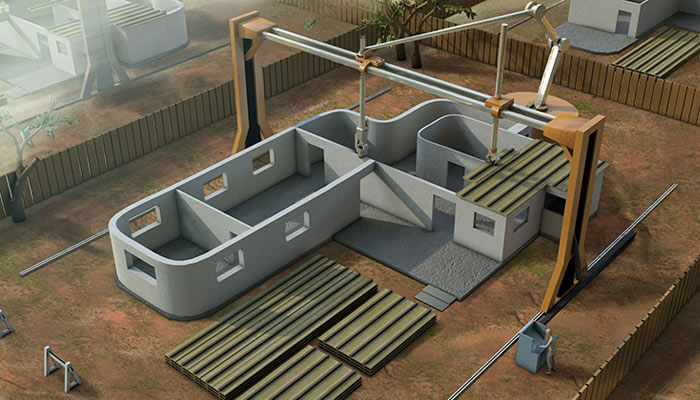As we navigate through the changing domain of technology, one innovation stands notably in the field of building: 3D printing. This remarkable approach is transforming the manner buildings and frameworks are designed and assembled, introducing a new era of effectiveness, eco-friendliness, and innovation.
Transforming Infrastructure: One Stratum at a Moment
The integration of 3D printing in building delivers numerous game-changing benefits. Foremost among these is the substantial minimization in material surplus. Classic infrastructure approaches typically result in significant surplus materials that add to ecological depletion. In contrast, 3D fabrication employs a precise incremental approach, consuming only the required amount of material and thus minimizing surplus substantially.
Another noteworthy advantage is the dramatic reduction in construction time. Undertakings that conventionally take extended durations can be completed in a portion of the duration with 3D manufacturing innovations. This time reduction is due to the automated functionality of 3D printers that can operate around the clock without manual assistance, considerably reducing complete project timelines.
Moreover, 3D printing opens up opportunities for building complex, custom models at no extra price. The flexibility of 3D printers permits for elaborate patterns and shapes to be created that would either be highly expensive or unfeasible to achieve with standard building approaches. This function not only elevates design aesthetics but also enables designers to optimize designs for enhanced functionality and resilience.

Cutting Expenditures and Boosting Accessibility
Budget reduction is yet another notable benefit brought about by 3D printing in infrastructure. By minimizing manpower expenses and decreasing the duration necessary to complete undertakings, the total budget tied to constructing structures is lowered. Moreover, affordable 3D printing machines are getting more accessible, making this technology within reach of emerging companies and independent creators keen to experiment with its capabilities.
The budget-friendliness of these units also paves the way for innovation in connected sectors such as garment printing. While primarily recognized in construction sectors, the range of 3D fabrication expands into various domains including apparel. Here, creators experiment with 3D fabricated clothing, challenging creative boundaries and reshaping material manipulation while benefiting from cost-effective fabrication costs.
An Eco-Friendly Future Powered by Technology
Environmental responsibility is another cornerstone of this technology’s appeal in the building industry. 3D printing promotes a environmentally friendly strategy to development by minimizing material excess and resource expenditure. Furthermore, it supports the integration of eco-friendly resources like repurposed plastics or hybrid blends, which additionally decreases the environmental footprint of this conventionally heavy-polluting field.
The international transition to green approaches gains a strong partner in 3D manufacturing technologies, likely transforming how building regulations and criteria are developed going forward. By implementing these advanced methods, the building field moves towards realizing greener business practices.
Transforming Visions to Life
Imagine neighborhood facilities in underprivileged regions being erected within days to meet pressing requirements or architects designing masterpieces reminiscent of environmental structures that merge effortlessly into their surroundings – such situations are not merely theoretical but are rapidly becoming feasible through 3D printing.
While these achievements indicate just the start, they indicate a era where construction harmonizes seamlessly with both cultural aspirations and sustainable care.
If we advance on this course, construction will not only represent the tangible formation of environments but also signify a dedication to innovative thinking and responsible living. Merging creativity with usability, 3D fabrication is ready to transform our physical environment in manners we are just beginning to comprehend.
Through constant improvements and an adoption of these forward-thinking strategies, our built surroundings will undoubtedly morph into reflections of human ingenuity driven by the exactness and boundless possibilities of 3D fabrication.
For additional information about may in 3d gia reyou can check our webpage
